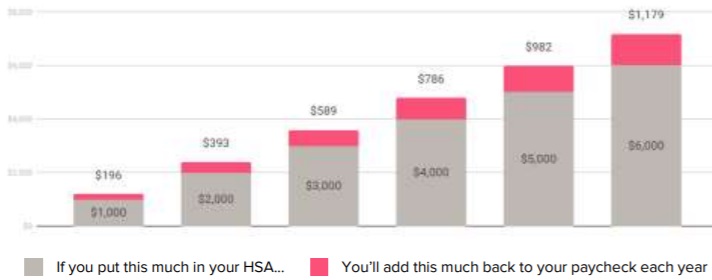Spotlight Value of Benefits Package During Open Enrollment
It's an opportunity to help employees understand and use their benefits

The COVID-19 pandemic has highlighted the importance of helping employees maintain physical, mental and financial health, making this year's open enrollment period a critical time for employers to think about the benefits they're providing and to communicate the value of these offerings to employees.
"This is not a typical year," said Hope Manion, senior vice president for Fidelity Investments' workplace consulting division. "We cannot simply default our benefits like we may have done in previous years."
She advises employers to encourage employees to spend more time during this year's enrollment period reviewing their benefits, learning about all of their offerings and asking questions. "Given that so many have experienced financial and health crises this year, now is the time to ensure they don't overlook benefits that could impact their future health and financial well-being," she noted.
Employees Rush Through Enrollment
Nearly three-quarters of employees—73 percent—spend less than an hour, and 41 percent invest less than 30 minutes, reviewing their benefits at enrollment time, according to a March study of 1,200 U.S. consumers on behalf of life and accident insurer Colonial Life. Because the pandemic has changed the way millions of workers live and work, simply rushing through their annual benefits enrollment won't do this year.
"If this year has taught us anything, it's the importance of our health and the value in taking every opportunity to protect it," said Richard Shaffer, senior vice president of field and market development at Colonial Life. "As we head into enrollment season this fall, workers across the country need to take time to ensure they're protecting their families, finances and futures against unexpected events."
Surprisingly, those who are the least confident in their knowledge of the benefits available to them are most likely to rush through the enrollment process. Nearly 90 percent of employees who reported not understanding their benefits "at all" said they plan to spend less than an hour on enrollment this year.
"Especially in today's environment, offering benefits isn't enough," Shaffer said. "To make the investment pay off, employers must ensure employees take the time to understand, value and participate in the benefits enrollment process."
Showcase How Benefits Are Vital
A new Fidelity report, Uncovering the Real Value of the Benefits You Offer, shows that employees are often unaware of their benefits options and frequently don't take advantage of them. The findings are from a survey of nearly 9,500 participants in Fidelity-administered benefit plans.
For instance, only 61 percent of employees could report whether telemedicine was offered to them. "In this case, if you are offering a benefit low in awareness, you may need to go back to basics and increase promotional efforts that emphasize availability, what it is, and how to use it," the report points out.
Health saving accounts (HSAs) are a different story. While 92 percent of employees surveyed knew whether an HSA was available, many chose not to opt for a high-deductible health plan (HDHP), which is a requirement to contribute to an HSA. However, 89 percent of account-holders who used an HSA reported that it had a positive effect on their lives. "In this case, awareness about availability isn't the issue, but employees may not understand the value a benefit brings," the report stated.
Give Examples, Use Visuals
Smarter benefits choices can save employees thousands of dollars on premiums and taxes, such as by choosing high-deductible plan options, when appropriate, and boosting their HSA contributions, advised Helen Calvin, chief revenue officer at Jellyvision, a provider of benefits navigation software.
"Employees are underinvesting against what their health care spending is expected to be, paying income and payroll taxes unnecessarily on money they'll spend," Calvin said.
"Spelling out the value of HSAs is all about visualization," she noted. "Share graphics in open enrollment materials to give employees a concrete idea of what they could save if they contributed to an HSA. For example:
How to Save More Money on Health Care

Source: Jellyvision.
The takeaway: "If you save $5,000 in an HSA, you'll save nearly $1,000 in taxes," Calvin said. "Use jargon-free clear words, addressing employees' fundamental questions: What's in it for me if I decide to contribute to an HSA. How can I put more money back in my own pocket?"
Patrick Niday, director of implementation at Jellyvision, added that because of the emotional and financial stress caused by the pandemic, "Information may fall on fresh ears this year, so lean into that."
[SHRM members-only toolkit: Managing Organizational Communication]
Approaching Open Enrollment
Fidelity's Manion suggested that open enrollment communications encourage employees to consider the following when selecting benefits for the year ahead:
- Health insurance. Consider your finances, family health status, and preferred health care providers and hospitals when choosing health care coverage. Review deductibles and out-of-pocket maximums. To take advantage of an HSA, enroll in an HDHP.
- HSAs and flexible spending accounts (FSAs). Take the time to learn how each of these accounts can be used, reviewing eligibility guidelines and updates to coverage, including services like telemedicine and over-the-counter medications.
- Retirement savings. Consider increasing your 401(k) retirement savings plan contribution if the company reduced or suspended its match as a result of the COVID-19 pandemic.
Other benefits may not require an employee to enroll and so are often overlooked despite their value, Manion noted. Be sure to highlight information regarding:
- Telemedicine. Among Fidelity clients, 76 percent saw an increase in telemedicine use since the COVID-19 pandemic began. This benefit will continue to be important, and employees should understand how it works.
- Employee assistance programs (EAPs). As the pandemic caused many people to experience anxiety, mental health and counseling services, such as those offered through an EAP, saw a 39 percent increase in use. This is a benefit that is impactful to employees' overall well-being when offered.
- Wellness programs. Wellness programs are much appreciated when used, but 30 percent of employees surveyed did not know whether their employer offered them.
With millions of employees still working at home, effective benefits communication is more challenging than ever, Colonial Life's Schaffer said. He advised business and HR leaders to "ensure they're providing opportunities for employees to learn basic information and ask questions, even in a virtual environment."
5 Questions to Kick-Start Open Enrollment Planning For employees dealing with physical, emotional and economic setbacks due to the pandemic, "this will be the year to reevaluate insurance and financial safety nets, so keep this in mind as you communicate about medical plans, disability insurance, flexible spending accounts and other financial wellness benefits," blogged Megan Yost, vice president and engagement strategist at communications consultancy Segal Benz in San Francisco. She advised open enrollment managers to ask themselves five questions:
"Even if you don't have all your plan design changes finalized just yet, planning ahead can help make everything go more smoothly and minimize unnecessary stress," Yost observed. "Lay your foundation now—and fill in the details when you have them." |
[Visit SHRM's resource page on Open Enrollment.]
Related SHRM Articles:
Viewpoint: Conducting Open Enrollment During the Pandemic, SHRM Online, July 2020
Planning 2021 Benefits Changes for the COVID-19 Era, SHRM Online, July 2020
Prepare for Open Enrollment Challenges During a Difficult Year, SHRM Online, July 2020
Virtual Benefit Fairs Draw Interest for Fall Open Enrollment, SHRM Online, July 2020
Related SHRM Resources:
Open Enrollment Guide & Resources
Advertisement
An organization run by AI is not a futuristic concept. Such technology is already a part of many workplaces and will continue to shape the labor market and HR. Here's how employers and employees can successfully manage generative AI and other AI-powered systems.
Advertisement


